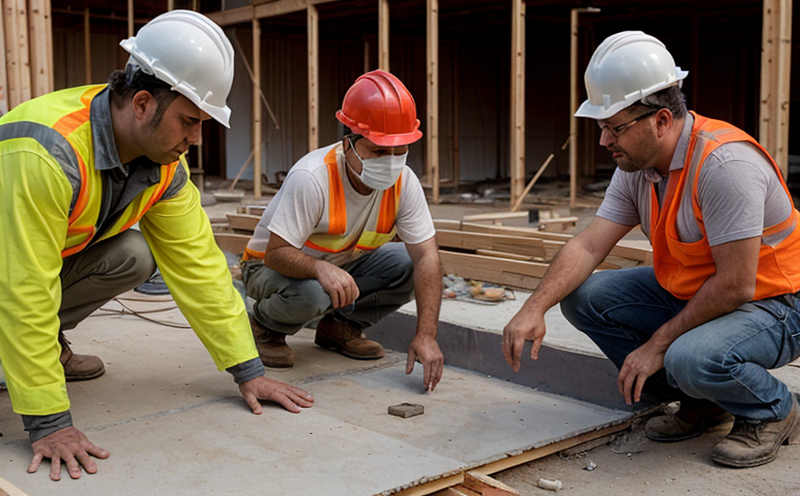Construction material inspection
The inspection of construction materials is a critical process that ensures adherence to design specifications and regulatory standards. In the realm of third-party surveillance and product quality inspection, this service plays an indispensable role in maintaining high-quality infrastructure and facilities.
The scope extends beyond mere compliance; it encompasses rigorous testing and evaluation aimed at identifying any potential flaws or non-conformities early on. This proactive approach not only enhances project success but also safeguards public health and safety by preventing the use of substandard materials that could compromise structural integrity, durability, and environmental sustainability.
Our team uses advanced analytical techniques to evaluate various aspects of construction materials including, but not limited to, strength, composition, chemical properties, and physical dimensions. These tests are conducted using state-of-the-art equipment calibrated according to international standards such as ISO 9001:2015 for quality management systems.
By leveraging cutting-edge technologies like X-ray fluorescence (XRF) spectrometry, scanning electron microscopy (SEM), and Fourier transform infrared spectroscopy (FTIR), we provide precise measurements and comprehensive analysis. Such methodologies ensure accurate assessments of raw materials before processing begins as well as finished products post-manufacture.
Our expertise lies in interpreting complex data outputs from these instruments to determine whether the material meets specified criteria set by relevant authorities like ASTM C1289 for concrete aggregates or EN 14305-3:2016 for ceramic tiles. Understanding local and international regulations is crucial given that many projects operate across multiple jurisdictions.
Moreover, our services extend to lifecycle management of materials throughout their use phase through regular monitoring and maintenance recommendations based on ongoing inspections. This continuous evaluation helps maintain optimal performance levels while minimizing waste generation during disposal at end-of-life stages.
In summary, construction material inspection is more than just a quality assurance measure; it represents a commitment to excellence in every aspect of building projects. By adhering strictly to prescribed standards and employing sophisticated testing procedures, we guarantee reliable outcomes that contribute significantly towards achieving project objectives efficiently and effectively.
Benefits
- Enhanced confidence in the quality of construction materials used throughout a project lifecycle.
- Avoidance of costly errors due to non-compliance with standards.
- Improved reputation among stakeholders leading to better long-term business relationships.
- Facilitation of smoother regulatory compliance processes reducing potential delays and fines.
- Promotion of sustainable practices through lifecycle assessment insights provided during inspections.
Customer Impact and Satisfaction
The impact of construction material inspection extends far beyond immediate project requirements. It significantly influences customer satisfaction by ensuring consistent delivery of high-quality products that meet or exceed expectations. This aligns perfectly with broader goals related to sustainability and safety, which are increasingly important factors for both clients and end-users.
By working closely with our customers from the early stages of material selection through final acceptance, we help them make informed decisions that reflect their values and objectives. This collaborative approach ensures that every inspection serves a dual purpose—satisfying current needs while setting foundations for future improvements.
Environmental and Sustainability Contributions
Incorporating environmental considerations into construction material inspections is essential given today's heightened awareness regarding sustainability issues. Our services go beyond traditional quality checks by incorporating lifecycle assessment principles that evaluate not just the immediate performance of materials but also their long-term impacts.
This holistic view allows us to identify opportunities for reducing waste generation, minimizing resource consumption during production processes, and promoting the use of recycled content where appropriate. By doing so, we contribute positively towards achieving carbon reduction targets set forth by various environmental frameworks such as ISO 14001:2015.
Furthermore, our insights play a vital role in supporting green building initiatives like LEED (Leadership in Energy and Environmental Design) certification programs. These credentials are becoming increasingly sought after by architects, developers, and owners who recognize the importance of creating energy-efficient, environmentally friendly structures.





